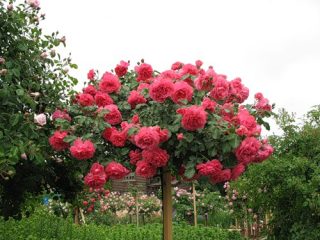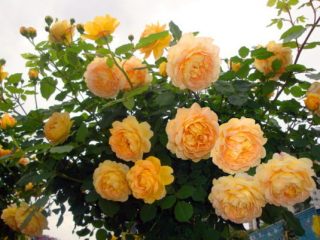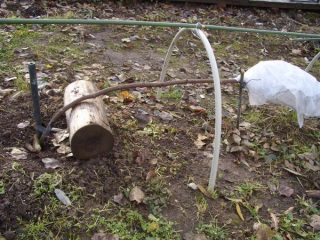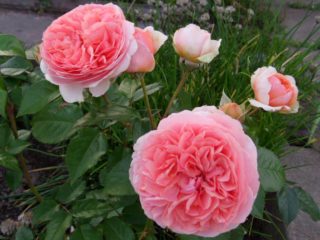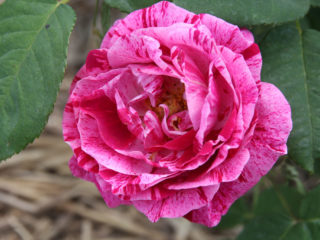Content
Rose Abraham Derby is a popular park variety of particular interest to gardeners and landscape designers. The hybrid plant is widely used for decorating personal plots. The flower is characterized by resistance to adverse environmental conditions. Therefore, it is often chosen for regions where it is impossible to grow other, less resistant varieties of roses.
History of selection
The Abraham Derby variety was developed in 1965 in England. The breeder is the famous British breeder David Austin. He developed more than 150 new ornamental varieties, most of which are actively cultivated by gardeners around the world.
Rose David Austin Abraham Derby is the result of interspecific crossing. During breeding work, the varieties Aloha and Yellow Cushion were used.
The rose is named after British metallurgist Abraham Derby III, who is famous for building the world's first cast iron arch bridge. This building is located near the breeding station where David Austin worked.
Description of the Abraham Derby rose and characteristics
The approach to plant classification varies. Some gardeners consider the Abraham Derby rose to be a climbing rose. This is explained by the fact that the Aloha variety, which was used in breeding work, belongs to this category. In fact, the plant does not have long branched vines. Therefore, most nurseries grow the Abraham Derby bush rose, which blooms on the shoots of the current year.
The variety is classified as a park variety. The plant is a medium-sized ornamental shrub. Height - from 60 cm to 1.5 m. Under favorable conditions, the bush reaches 2.5-3 m.
The plant is highly branched. The shoots are strong, with a lot of thorns. Late stems are prone to lignification. The bark is soft, dark green with a purple tint.
Surface shoots are covered with dense foliage. The plates are ovoid, up to 8 cm long. Yellowish veins are clearly visible on the leaves.
During the flowering period, the rose is covered with large double flowers. They consist of 60-70 petals of various sizes. The shape of the buds is cup-shaped, the diameter reaches 12 cm. The color is soft pink with a yellow-peach core.
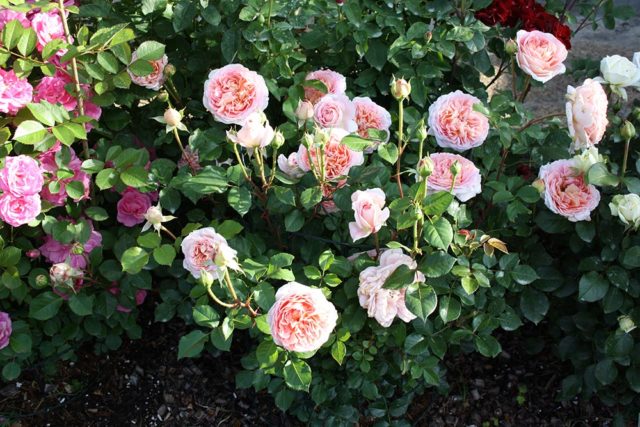
The Abraham Derby rose begins to bloom in mid-June.
The buds bloom once. Flowering lasts until early September. Roses change throughout the summer. Therefore, flowering is not interrupted. The plant emits a pleasant, persistent aroma.
The bushes are lush and vigorous. They lend themselves well to shaping. Supports for shoots are used provided that their height exceeds 110 cm.
Abraham Derby roses are characterized by early flowering. When planting a seedling in the spring, it may bloom in the summer. The bush grows quite quickly.

Annual growth of shoots – up to 40 cm
The variety is characterized by high frost resistance. The plant tolerates temperatures down to -26 degrees. In central Russia and in the southern regions, roses can be grown without shelter for the winter. Frost protection is required in Siberia and the Urals, where temperatures can drop lower.
The Abraham Derby variety tolerates short-term drought well. A prolonged lack of moisture has a detrimental effect on the condition of the bush. The buds and foliage wither and gradually fall off.
Rose is sensitive to waterlogging. Prolonged heavy rains and improper watering can seriously damage the bush. Excess moisture is the main cause of disease development, especially black spot and powdery mildew.
Advantages and disadvantages of the variety
The hybrid English rose Abraham Darby has a wide range of positive characteristics and qualities. This explains its popularity among flower growers and landscape designers.
Advantages of the variety:
- compact bush size;
- unique color of buds;
- long flowering;
- frost resistance;
- pleasant aroma;
- good tolerance of prunings;
- low sensitivity to diseases.
The described variety also has negative characteristics. They should be taken into account before planting the plant on your site.
Flaws:
- demanding care;
- deterioration of decorative qualities under unfavorable weather conditions;
- possibility of pest damage;
- sensitivity to nutrient deficiencies.
The Abraham Derby variety cannot be considered one of the most resistant. However, if agricultural techniques are followed, such a plant can be grown without the risk of the bush withering.
Reproduction methods
The hybrid rose variety Abraham Derby tolerates division well.Therefore, this option is most convenient for those who already have a similar plant. The bush is dug up, cleared of soil and cut into several parts. Each division is planted in a new place. This is the fastest and easiest way to grow another specimen in the garden.

Shoots on divisions need to be trimmed, leaving 12-15 cm from the root collar
Another effective option is cuttings. Separated shoots of roses take root and adapt well to nutritious soil. However, this process takes a long time.
Abraham Derby roses can be propagated by layering or suckers. However, such methods are more labor-intensive and are better suited for experienced gardeners.
Growing and care
The English park rose is planted in the fall, at the beginning of September. The plant adapts better to the cold and tolerates the first winter normally. Next year the young bush will begin to actively grow and bloom.
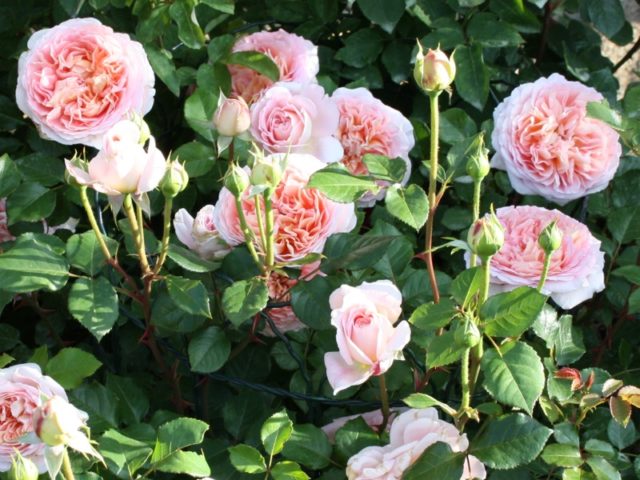
The Abraham Derby rose requires a location with partial light.
It is not recommended to plant the bush in the sun. Excessive light negatively affects the color of the buds and can cause burns. The place must be protected from strong winds.
How to plant a bush:
- Dig a planting hole 60-70 cm deep.
- Prepare a soil mixture of turf soil, river sand, compost and peat.
- Soak the roots of the seedling in water, then in an antiseptic solution for plants.
- Place a drainage layer of expanded clay, pebbles or broken bricks at the bottom of the hole.
- Sprinkle with loose soil.
- Place the seedling with a recess of 5-6 cm.
- Spread the roots and cover them evenly with soil mixture.
At first, the bush needs to be given water once a week. In mid-autumn, watering is stopped until spring.
Adult bushes need to be watered 1-2 times a week. For each, use 12-15 liters of water.
As the soil compacts, loosening is carried out. To retain moisture, the soil surface is mulched with bark, straw or sawdust.
Roses are fertilized 4-5 times a year. The first is carried out in April. Subsequent ones at intervals of 2-3 weeks during the budding period before flowering. After this, the rose is fed with superphosphate. Organic fertilizers are applied in the winter.
Sanitary pruning is required twice a year. If it is necessary to form a bush, shoots of 3-4 buds should be removed. The procedure is carried out after flowering.
Features of growing Abraham Derby roses are presented in the video.
Pests and diseases
The most common diseases of Abraham Derby roses are black spot and powdery mildew. They arise due to waterlogging and violation of the watering regime.
For preventive purposes, the plant should be sprayed with a soap solution. In autumn, in preparation for wintering, the bush is treated with copper sulfate.
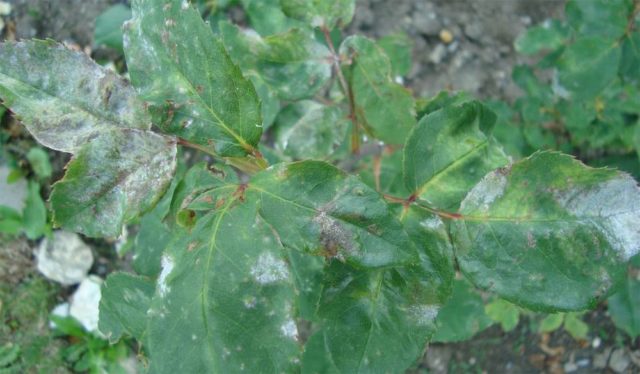
In case of powdery mildew, the affected shoots must be removed
Preventive treatment with fungicides is carried out 2 times a year - before flowering and in autumn. This will protect the bush from fungi and bacteria.
Common pests of the English park rose Abraham Derby are:
- aphid;
- slobbering pennies;
- sawfly;
- leaf rollers;
- roseate cicadas;
- spider mites.
The most effective method of insect control is insecticide treatment. It is carried out 2-3 times with an interval of 3-7 days, depending on the properties of the drug.
Application in landscape design
The Abraham Derby rose can be grown as a scrub rose, and as a climbing rose - with a garter to the trellis. The plant is used for single planting or in a group. The variety goes well with other types of roses, as well as tall flowering shrubs.
Abraham Derby is often used in mixborders. They are placed in the background. Herbaceous, low-growing plants with early flowering are planted in front. The abundant foliage of roses acts as a backdrop for them.
The Abraham Derby variety is not recommended for planting next to crops that are demanding on soil composition. They should be grown near unpretentious plants. It is imperative to maintain a distance when planting next to climbing vine-like crops.
Conclusion
Rose Abraham Derby is a hybrid variety that has earned popularity among gardeners and designers. The plant is valued for its unique decorative qualities, long flowering, and resistance to frost. Despite a number of advantages, the Abraham Derby rose cannot be called unpretentious. To successfully grow such a flower, you must follow the rules of planting and care.
